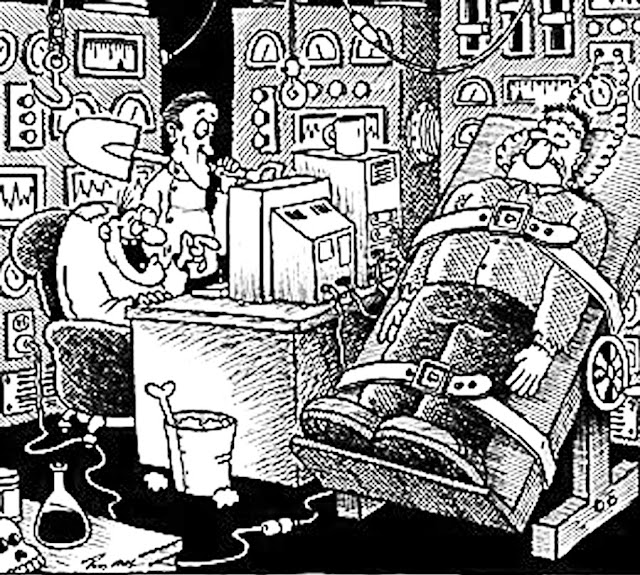Everyone loves a list. The problem with "Top 10" lists is that they go out of date. This one was written about a year ago, but still holds in 2013, though it is beginning to creak at the seams. It'll be a while before #1 is toppled, I hope, and by comparison all the others on the list trail away in a distant squabble of numbers. Part of the issue is that the sale figures can be hearsay. It's hard to confirm just what moron was willing to spend how much on a painting. But fortunately for our entertainment, there is no shortage of morons.
"The Qatari royal family has paid £158 million ($250 million) for Paul Cézanne’s “The Card Players” painting, making it the highest sum ever paid for an art work according to The Telegraph."
The sum is so ridiculous as to beggar belief. If this list was compiled the same time last year, you might describe the then #1 price of $156 million for a Pollock as "staggering" and "jaw-dropping", but with Vanity Fair's announcement that the Qatari Royal Family bested that price by $100 million, the only response is to roll your eyes and give up. Qatar spending $250 million on one painting in the wake of the Arab Spring is the kind of brinkmanship that makes me head for the door.
For the record, here's what $250 million looks like. This was confiscated from a Mexican drug cartel, by the way. There are very few people in the World who have this kind of cash sitting around, and I doubt if any of them are legit. On that note, one of the Qatari Royals was arrested in 2005 for spending $1 billion of public funds on artwork.
By all accounts it's a stupid sum of money, but I guess that if I did have that kind of loot, I'd rather spend it on a Cézanne than on Charlie Sheen's rehab, which reportedly cost the same. Seems a bit steep, if you ask me. For that price, I'd be tempted to chuck a bottle of bleach, a fake moustache and a one-way ticket to Mexico into my napsack, and hop over the back fence. You could buy a shitload of blow for a quarter of a billion.
 |
| Four Steps to Success |
 |
| Jackson Pollock, "No. 5, 1948." And yes it's sideways; does it matter? |
"The most paid for a painting at auction is $106 million, paid last year at Christie’s for a lush portrait of Picasso’s curvy mistress Marie-Thérèse. Privately, works by Picasso, Pollock, Klimt, and de Kooning have changed hands in the $125 million-to-$150 million range." [source]
So what's the Top 10 list of most expensive paintings ever? Here it is, with prices adjusted for inflation:
1: $250 million Paul Cézanne “The Card Players”, sold in 2011
2: $156.8 million Jackson Pollock “No 5, 1948” , sold in 2006
3: $154 million Willem de Kooning "Woman III", sold in 2006
4: $150.2 million Gustav Klimt "Portrait of Adele Bloch-Bauer I" sold in 2006
5: $144.1 million Vincent van Gogh "Portrait of Dr. Gachet" sold in 1990
6: $136.4 million Pierre-Auguste Renoir "Bal du moulin de la Galette" sold in 1990
7: $124.3 million Pablo Picasso "Garçon à la pipe" sold in 2004
8: $110.1 million Pablo Picasso "Nude, Green Leaves and Bust" , sold in 2010
9: $107 (++) million (plus exchange of works) Vincent van Gogh "Portrait of Joseph Roulin" sold in 1989
10: $106.1 million Pablo Picasso Dora "Maar au Chat" sold in 2006
Trivia about the World's most expensive paintings:
3 paintings are works by Picasso
3 paintings are works by Van Gogh
The top 4 were private sales
4 of the Top 10 paintings were sold in 2006
3 paintings have the artists' mistress as the model
Here's an interesting video on the subject, from Alastair Sooke. He comes off like the 'everyman' of painting - asking the questions we really all want to know deep down - which is actually refreshing next to the grotesque new-money collectors like Jeffrey Archer, who orders him to get his "grubby hands" off his walls.














































































